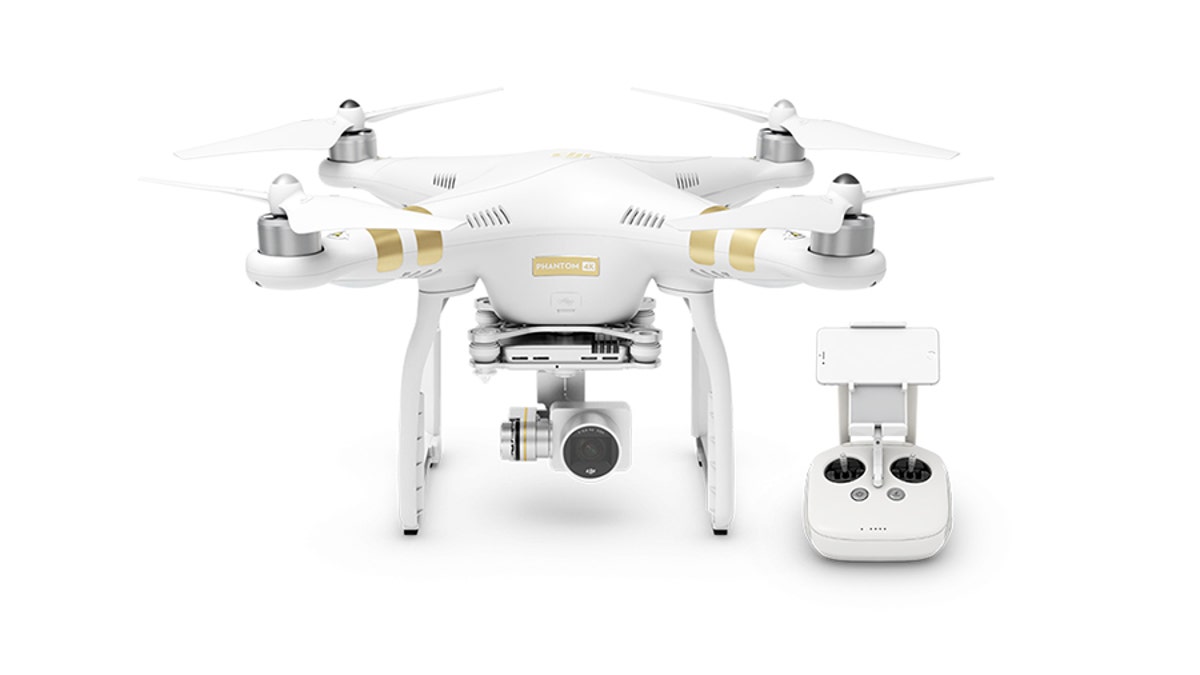
DJI Phantom 3 4K (DJI)
LAS VEGAS—DJI has added a new Phantom to its line of consumer-friendly drones. The Phantom 3 4K delivers the same quality video as the Phantom 3 Professional — that is, 30fps 4K footage at a 60Mbps compression rate—and it looks almost exactly the same. But while the Professional will set you back around $1,200, the Phantom 4K is priced at a friendlier $999.
So, what's missing? The answer is simple one that may be a nonissue for some and make the drone a nonstarter for others: operating range. The Phantom 3 Professional—as well as the $1,000 Advanced and pricey Inspire 1 and Inspire 1 Pro models all use DJI's LightBridge system to stream video back to the screen of a table or phone. In our tests we've found that LightBridge delivers solid video streaming at distances of up to 4,000 feet under the right conditions with the Inspire 1, and about 3,150 feet with the Phantom 3 Advanced.
The Phantom 3 4K relies on Wi-Fi to transmit the video feed back to the controller. This limits both resolution—the stream is 480p—and distance. DJI states that Wi-Fi transmission is good for a 3,937-foot operating range, but my tests of a pre-production Phantom 3 Standard unit didn't nearly match that. At its best, in a rural area, I was able to fly about 1,200 feet away before the video feed started to cut out, and I only managed 400 feet in the suburbs. Of course, that was a pre-production unit, and may not be indicative of the final product. When I flew a production model of the older Phantom 2 Vision+, which also uses Wi-Fi for video transmission, I was able to go 2,000 feet in a rural area with clear line of sight—still, that's only half of what DJI claims is possible.
The lack of LightBridge also means that you won't be able to connect an HDMI device to the remote, so don't expect to use it with FPV goggles. Aside from those differences, the Phantom 3 4K offers the same flight features as the Advanced and Professional models. It supports intelligent flight modes, including Point of Interest and Return to Home, and has the vision positioning system to help prevent crashes when flying low to the ground.
It's up to you whether the low-resolution video feed and limitd control range are worth a $200 savings. But DJI certainly does offer you options. If you want 4K video and don't mind a lower quality video feed to aid you while flying, this is it. You could spend the same amount on the Phantom 3 Advanced, which records 40Mbps 2.7K footage, and can fly much further, or you can spend a bit more for both 4K and LightBridge with the Phantom 3 Professional. And for drone videographers who are happy with both a fairly short control distance and 2.7K video, there's the $800 Phantom 3 Standard.
Pricing is set for the Phantom 3 4K at a reasonable $999, but there's no word on when the aircraft will be delivered. Like the other members of the Phantom family, the 4K is heavy enough to require registration in the United States.
Here are CES, DJI also announced that its Inspire 1 Pro, which was initially only offered in white, will now be available in black with a matching black remote control.
